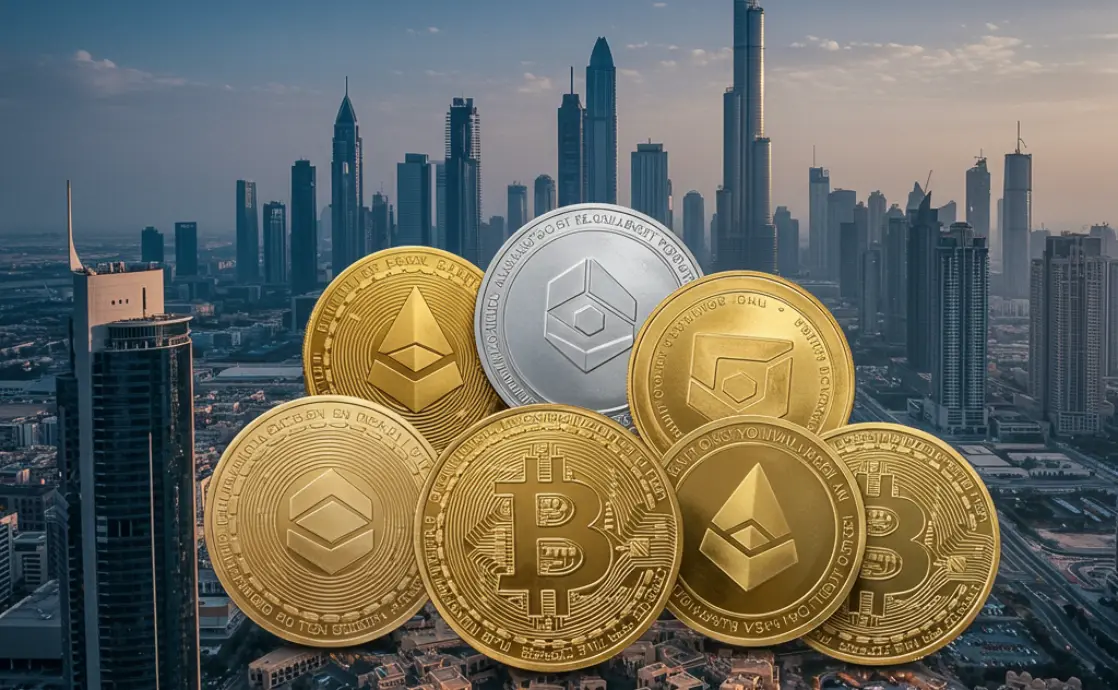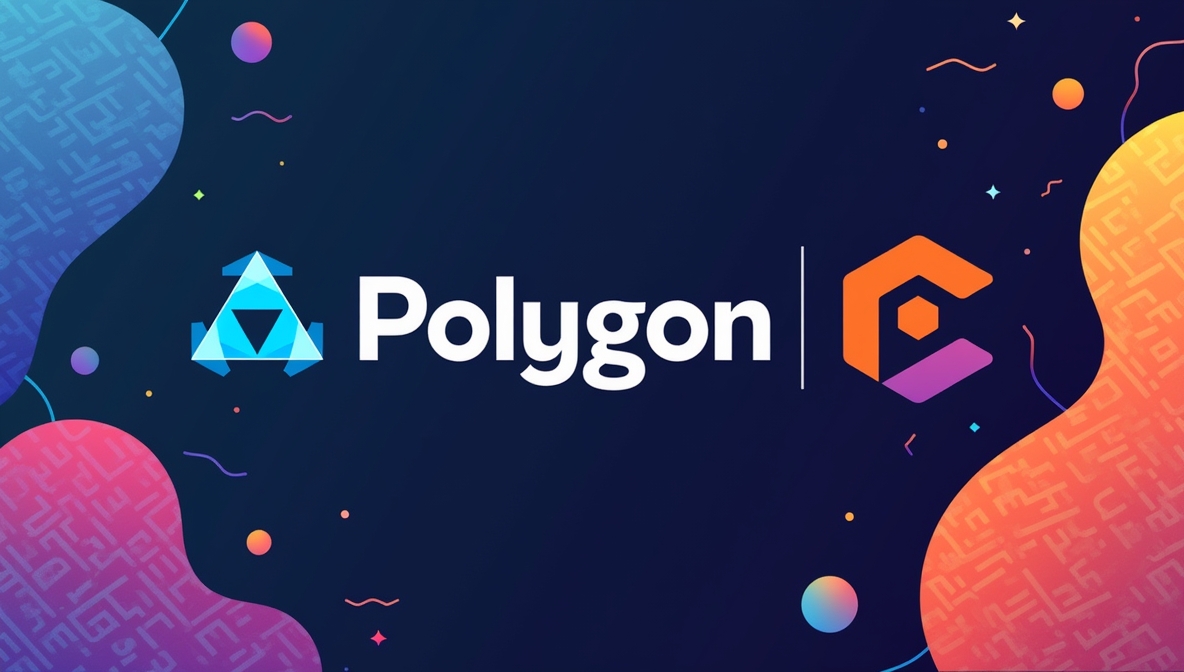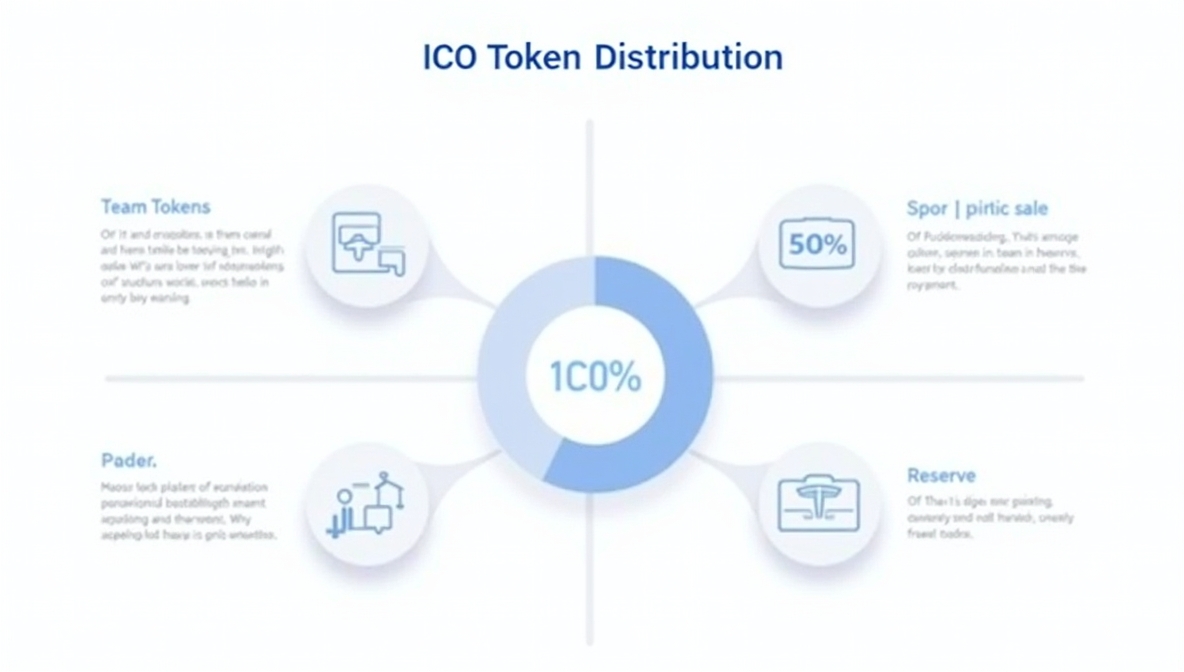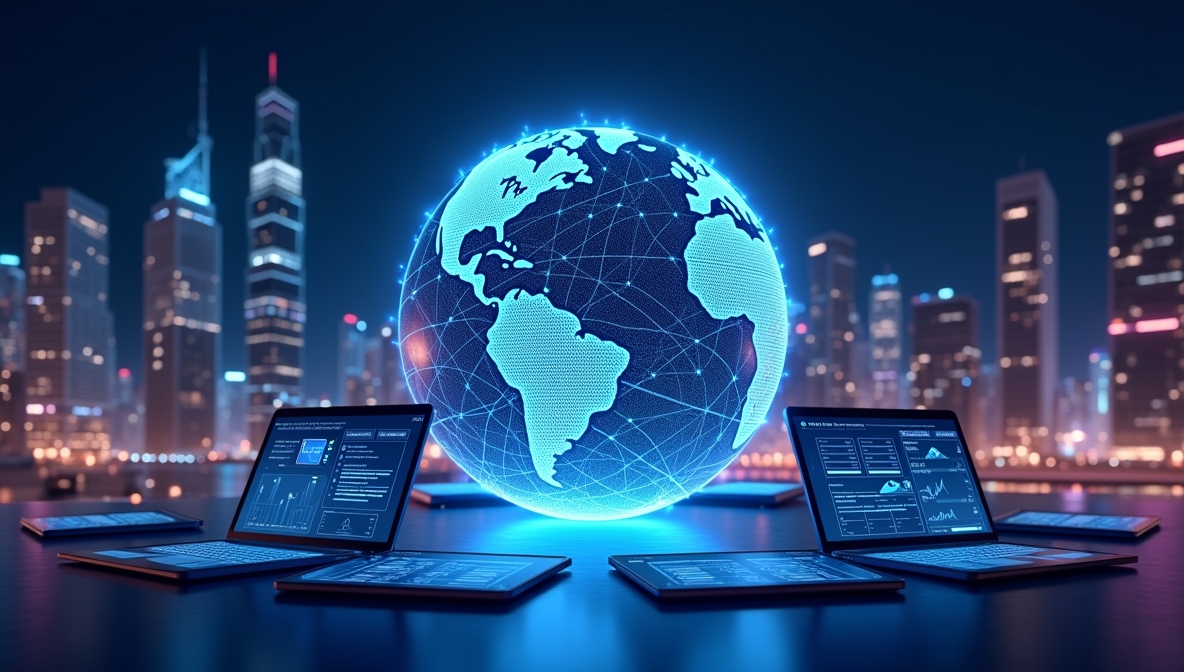Have you ever felt limited by the static nature of traditional digital assets? What if your digital collectibles could evolve, adapt, and truly reflect the dynamic nature of the world around us? Imagine owning a digital artwork that shifts its colors based on the current weather, or a gaming asset that gains new abilities as you progress through the game.
This guide will illuminate the path, showing you exactly how to create dynamic NFTs that are not just unique but also incredibly engaging and valuable.
What Are Dynamic NFTs Again?
Dynamic NFTs, or dNFTs, represent a paradigm shift in the world of digital ownership. Unlike their static counterparts, which remain immutable after creation, dNFTs possess the remarkable ability to transform over time. This transformation is driven by external data, predefined conditions, or even user interactions, making them incredibly versatile and engaging. This capability opens up a whole new realm of possibilities for creators and collectors alike, moving beyond simple digital ownership to interactive and evolving digital experiences.
🖌️ NFT Insight: dNFTs are not just about owning a digital asset; they are about owning a piece of digital history that can change and adapt over time.
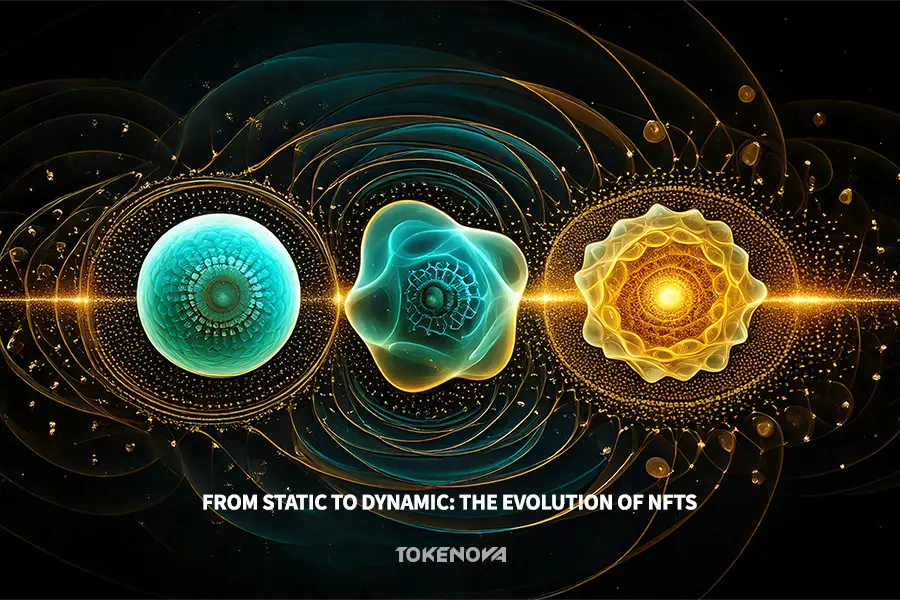
The Magic Behind the Change
The magic of dNFTs lies in their ability to react to the world around them. Think of a digital artwork that shifts its colors based on the current weather conditions, or a gaming asset that gains new abilities as a player progresses through the game. This is the power of dNFTs. They are not just static images or videos; they are living, breathing digital assets that can react to the world around them. This programmability and interactivity are what set them apart from traditional NFTs. The ability to make dynamic nfts means you can create assets that are not only unique but also incredibly engaging and valuable over time. This dynamic nature allows for the creation of digital assets that are not only collectible but also interactive and responsive to their environment, creating a more immersive and personalized experience.
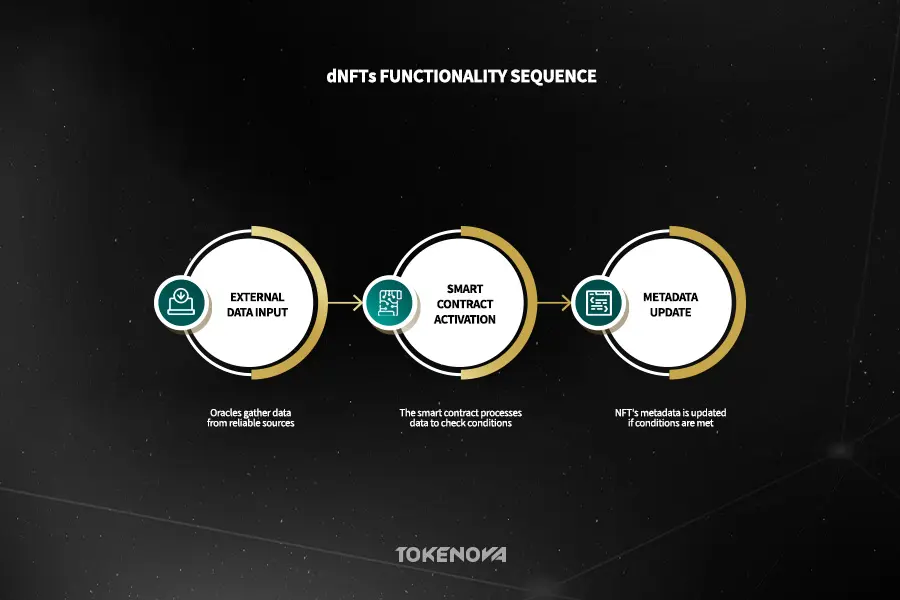
Static vs. Dynamic: A World of Difference
Static NFTs are like photographs they capture a moment in time and remain unchanged. They are fixed representations of a digital asset, with no ability to evolve or adapt. Dynamic NFTs, on the other hand, are like living organisms they grow, adapt, and evolve. This fundamental difference opens up a world of possibilities for creators and collectors alike. The ability to make dynamic NFTs means you can create assets that are not only unique but also incredibly engaging and valuable over time. For instance, a static NFT might be a digital trading card of a basketball player, while a dynamic NFT could be that same card, but with stats that update in real-time based on the player’s performance in actual games.
Core Components of Dynamic NFTs
Understanding the core components is crucial to grasping how to create dynamic NFTs. These elements work together to enable the dynamic nature of these digital assets. Each component plays a vital role in ensuring that the dNFT can change and adapt as intended, creating a seamless and interactive experience for the user. Let’s delve deeper into each of these core components.
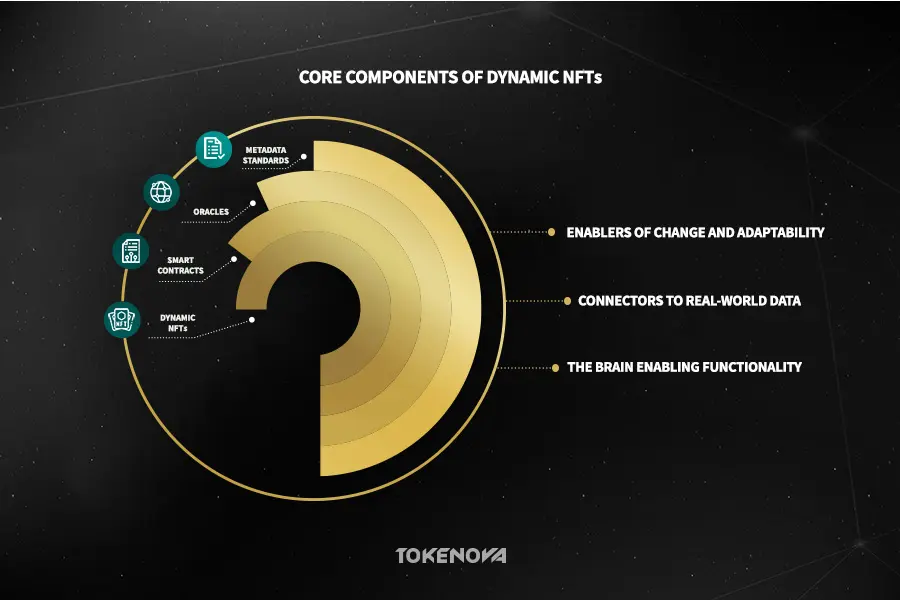
Smart Contracts: The Brains Behind the Operation
At the heart of every dNFT lies a smart contract. These self-executing contracts contain the programmable logic that dictates how the NFT will change. Think of them as the brain of the dNFT, controlling its behavior and evolution. Smart contracts are typically written in languages like Solidity and are deployed on the blockchain. They define the rules and conditions under which the dNFT will transform, ensuring that the changes are transparent and tamper-proof. These contracts are the foundation of the dNFT, providing the logic and rules that govern its behavior.
Security Considerations
It’s crucial to understand that smart contracts, while powerful, are also susceptible to vulnerabilities. Therefore, auditing smart contracts for potential security flaws is paramount. A thorough audit by a reputable firm can identify and mitigate risks, ensuring the integrity and security of your dNFT project. This process involves a detailed review of the code to identify any potential weaknesses that could be exploited by malicious actors.
Gas Fees
When interacting with smart contracts, you’ll encounter the concept of gas fees. These are transaction fees paid to the network for executing the smart contract code. The complexity of the smart contract and the current network congestion can influence gas fees. Ethereum’s transition to proof-of-stake (PoS) has reduced its energy consumption by over 99%, leading to significantly lower gas fees and improved transaction speed .
Additionally, alternative blockchains like Polygon and Immutable X now offer near-zero gas fees for NFT transactions, making them attractive options for dNFT projects.
Oracles: Bridging the Gap to the Real World
Oracles are the bridge between the blockchain and the real world. They provide the external data that triggers changes in the dNFT. For example, an oracle could feed weather data to a dNFT, causing it to change its appearance based on the current conditions. Services like Chainlink are popular choices for integrating oracles into dNFT projects. These services act as reliable data feeds, ensuring that the information used to update the dNFT is accurate and trustworthy. Without oracles, dNFTs would be limited to changes based on on-chain data, severely restricting their potential.
Types of Oracles
There are various types of oracles, each serving a different purpose. Price feeds provide real-time price data for various assets, while weather data oracles provide information about current weather conditions. Random number generators provide verifiable random numbers, which can be used for various purposes, such as generating unique traits for dNFTs. RedStone Oracles have gained popularity in 2024, offering real-time, adaptable data feeds for DeFi and NFT applications. Understanding the different types of oracles is crucial for choosing the right one for your dNFT project.
Oracle Manipulation Risks
One of the key challenges with oracles is the potential for oracle manipulation. Malicious actors could attempt to manipulate the data provided by oracles, leading to unintended changes in dNFTs. To mitigate this risk, it’s essential to choose reputable Oracle providers and implement security measures to protect against data manipulation. This includes using multiple oracles and implementing data validation techniques.
Specific Examples
Consider a dNFT that represents a virtual pet. A weather data oracle could be used to change the pet’s appearance based on the current weather, while a random number generator could be used to generate unique traits for the pet. A price feed oracle could be used to update the value of a dNFT based on the current market price of a related asset. These examples highlight the versatility of oracles and their potential to create more engaging and interactive dNFTs.
Token Standards: The Foundation of Flexibility
While ERC-721 is the standard for traditional NFTs, ERC-1155 is often preferred for dNFTs. This standard allows for the creation of both fungible and non-fungible tokens, providing the flexibility needed to handle the complex nature of dynamic assets. ERC-1155 is a powerful tool when you want to make dynamic nfts with diverse functionalities. It allows for the creation of multiple tokens within a single contract, which is particularly useful for dNFTs that may have different states or variations. This flexibility is crucial for creating dNFTs that can evolve and adapt over time.
ERC-721 vs. ERC-1155
ERC-721 is the standard for unique, non-fungible tokens, where each token is distinct and indivisible. ERC-1155, on the other hand, allows for the creation of both fungible and non-fungible tokens within a single contract. This makes it ideal for dNFTs that may have multiple states or variations, or for projects that require both unique and interchangeable tokens. The ability to handle both types of tokens within a single contract makes ERC-1155 a more versatile and efficient choice for dNFTs.
Metadata Standards
Metadata defines the attributes and information associated with an NFT, such as its name, description, and visual representation.
For dNFTs, metadata is crucial as it contains the information that can change over time. Adhering to established metadata standards ensures that dNFTs are compatible with various platforms and marketplaces, facilitating broader accessibility and interoperability.
In 2024, advancements in on-chain metadata storage solutions, such as Irys and Arweave, have made dynamic metadata more scalable and efficient.
Popular Use Cases for Dynamic NFTs
The versatility of dNFTs has led to their adoption across various industries. Let’s explore some of the most exciting use cases. These examples highlight the potential of dNFTs to transform how we interact with digital assets, moving beyond simple ownership to interactive and engaging experiences.
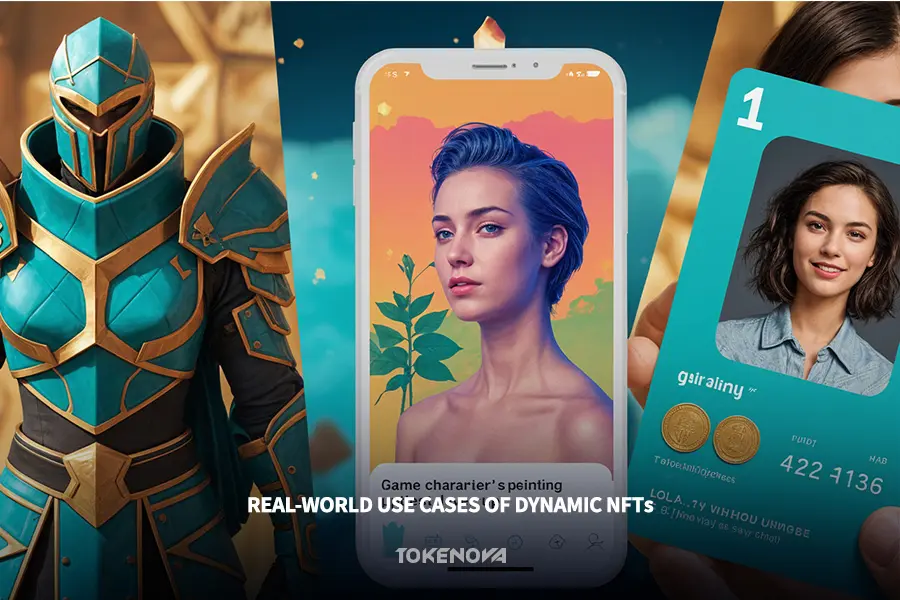
Gaming: Level Up Your In-Game Assets
In the gaming world, dNFTs are revolutionizing how players interact with in-game assets. Imagine a sword that becomes more powerful as a player completes quests, or a character skin that evolves based on achievements. This dynamic nature adds a new layer of engagement and value to in-game items. For example, a player might start with a basic sword NFT, but as they progress through the game and complete challenges, the sword’s appearance and stats could change, reflecting their accomplishments. This creates a more personalized and rewarding gaming experience, making the game more immersive and engaging.
Specific Game Examples
Several games are already exploring the potential of dNFTs. Axie Infinity uses NFTs for its in-game characters, while The Sandbox allows players to create and own virtual land as NFTs. These games are paving the way for the adoption of dNFTs in the gaming industry. More and more games are integrating dNFTs to enhance player engagement and create new revenue streams.
Player-Driven Evolution
dNFTs can enable player-driven evolution of in-game assets. This means that the actions and achievements of players can directly impact the evolution of their in-game items. This creates a more personalized and engaging gaming experience, where players have a direct impact on the value and appearance of their assets.
Art: Evolving Digital Masterpieces
Artists are using dNFTs to create digital artwork that changes based on real-world events or user interactions. A piece of art might shift its colors based on the time of day or the location of the viewer. This interactivity transforms digital art into a living, breathing experience. For instance, an artist could create a digital painting that changes its color palette based on the current weather in the viewer’s location, or a piece that evolves based on the number of times it has been viewed. This adds a layer of dynamism and engagement that is not possible with traditional art, creating a more interactive and personalized experience for the viewer.
Artist Case Studies
Artists like Refik Anadol are pushing the boundaries of digital art with dNFTs. Anadol’s works often incorporate real-time data, creating dynamic and ever-changing art pieces. These artists are demonstrating the potential of dNFTs to create truly unique and engaging art experiences.
Interactive Art Experiences
dNFTs can enable interactive art experiences, where viewers can directly influence the evolution of the artwork. This could involve voting on changes, interacting with the artwork in real time, or even contributing to its creation. This interactivity transforms digital art from a passive experience to an active and engaging one.
Collectibles: Real-Time Updates
Sports cards or tickets that update with real-time data are another exciting application of dNFTs. Imagine a sports card that changes its stats based on a player’s performance in a game, or a concert ticket that transforms into a commemorative item after the event. This adds a new level of engagement and value to collectibles. For example, a sports card could update with the player’s latest stats after each game, making it a more dynamic and engaging collectible. Similarly, a concert ticket could transform into a unique commemorative item after the event, complete with details like the date, venue, and setlist, making it a more valuable and memorable collectible.
Specific Collectible Examples
Beyond sports cards and concert tickets, dNFTs can be used for a variety of dynamic collectibles. Virtual trading cards that update with real-time data, event tickets that transform into commemorative items, and digital stamps that evolve over time are just a few examples. The possibilities are endless.
Real-Time Data Integration
Real-time data integration is what makes these collectibles truly dynamic. By connecting dNFTs to real-time data feeds, collectors can own assets that are constantly evolving and changing, making them more engaging and valuable. This integration adds a new layer of excitement and engagement to the world of collectibles.
Loyalty Programs: Rewarding Engagement
Loyalty programs are also getting a dynamic upgrade with dNFTs. As users reach milestones, their NFTs can evolve, unlocking new benefits and rewards. This creates a more engaging and rewarding experience for loyal customers. For example, a customer might receive a basic loyalty NFT, but as they make more purchases or engage with the brand, the NFT could evolve, unlocking new perks and discounts. This creates a more gamified and rewarding loyalty experience, encouraging customer engagement and loyalty.
Tiered Rewards
dNFTs can be used to create tiered reward systems, where users unlock new benefits and rewards as their NFTs evolve. This creates a more gamified and engaging loyalty experience, encouraging customers to engage with the brand and earn rewards.
New Use Cases
Beyond these popular use cases, dNFTs have the potential to transform various other industries. Let’s explore some of these emerging use cases.
Supply Chain
dNFTs can be used to track products in a supply chain, providing transparency and traceability. Each product could be represented by a dNFT, which would update as the product moves through the supply chain. This could help to combat counterfeiting and improve supply chain efficiency.
Real Estate
dNFTs represent real estate ownership and simplify the process of buying and selling property. This could make real estate transactions more efficient and transparent.
Identity
dNFTs provide a secure and verifiable way to prove your identity online. This could help to combat identity theft and improve online security.
Step-by-Step Guide to Creating Dynamic NFTs
Now, let’s get into of how to make dynamic nfts. Here’s a step-by-step guide to get you started. This process will help you understand the key steps involved in creating your own dynamic NFTs, from conceptualization to deployment.
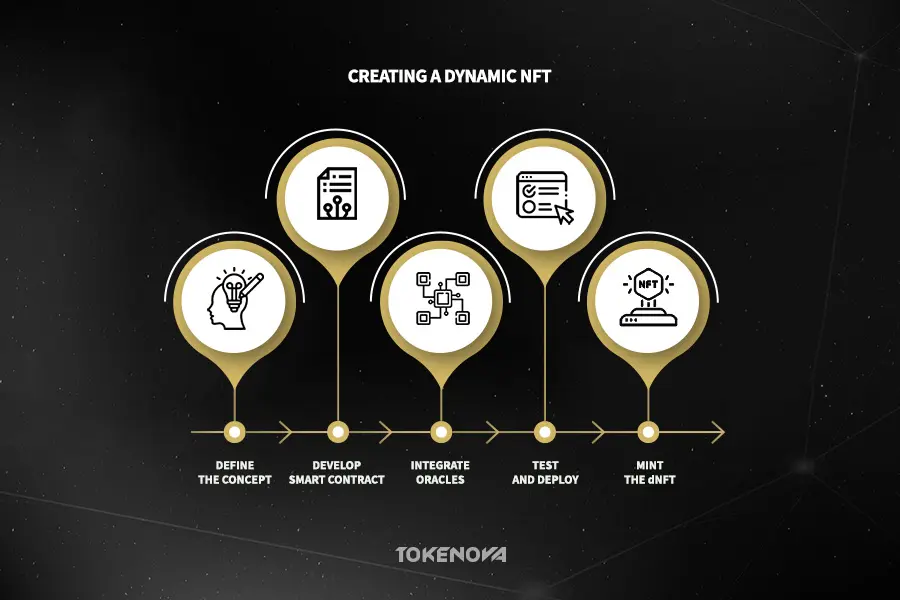
Step 1: Define the Concept: The Blueprint for Your dNFT
Before you start coding, you need a clear vision. What is the purpose of your dNFT? What triggers will cause it to change? How will it evolve over time? Defining these parameters is crucial for a successful project. This step involves brainstorming and outlining the specific features and functionalities of your dNFT. For example, you might decide that your dNFT will change its appearance based on the weather, or that it will evolve based on user interactions. This initial planning phase is critical for ensuring that your dNFT is both functional and engaging.
User Personas
Consider your target audience and their needs. Who are you creating this dNFT for? What are their motivations and expectations? Understanding your user personas will help you create a dNFT that resonates with your target audience.
Value Proposition
Define a clear value proposition for your dNFT. What problem does it solve? What benefits does it offer? A clear value proposition is essential for attracting users and ensuring the success of your dNFT project.
Step 2: Develop the Smart Contract: The Heart of Your dNFT
Next, you’ll need to develop the smart contract that will govern your dNFT. If you’re comfortable with coding, you can use Solidity to write your contract. Alternatively, no-code platforms like Crossmint offer a user-friendly way to create smart contracts without writing a single line of code. The smart contract is the core of your dNFT, as it contains the logic that dictates how it will change. Whether you choose to code it yourself or use a no-code platform, this step is essential for creating a functional dNFT. The smart contract will define the rules and conditions under which your dNFT will evolve.
Solidity Resources
If you choose to code your smart contract, there are many resources available for learning Solidity. The official Solidity documentation is a great place to start, and there are also many online courses and tutorials available.
No-Code Platform Comparison
Several no-code platforms are available for creating smart contracts. Crossmint is a popular choice, but other options include NFTPort and Rarible. Each platform has its own unique features and pricing models, so it’s important to compare them before making a decision.
Step 3: Integrate Oracles: Connecting to the Real World
To make your dNFT truly dynamic, you’ll need to integrate oracles. Services like Chainlink allow you to fetch external data and use it to trigger changes in your dNFT. This step is crucial for creating dNFTs that react to real-world events. Oracles act as a bridge between the blockchain and the real world, allowing your dNFT to access data that is not stored on the blockchain. This data can be anything from weather conditions to sports scores, depending on the specific use case of your dNFT. The integration of oracles is what truly brings your dNFT to life, allowing it to react to external stimuli.
Alternative Oracle Providers
While Chainlink is a popular choice, there are also other Oracle providers available. These include Band Protocol and API3. Each provider has its own unique features and pricing models, so it’s important to compare them before making a decision.
Step 4: Test and Deploy: Ensuring a Smooth Launch
Before deploying your dNFT to the main blockchain, it’s essential to test it thoroughly on a testnet. This will help you identify and fix any bugs or issues before they affect your users. Once you’re confident in your dNFT, you can deploy it to the main blockchain. Testing on a testnet is a crucial step in the development process, as it allows you to identify and fix any issues before they affect your users. This ensures that your dNFT functions as intended and provides a smooth user experience. Thorough testing is essential for a successful launch.
Testnet Options
Several testnet options are available, including Rinkeby, Goerli, and Kovan. Each testnet has its own unique characteristics, so it’s important to choose the one that best suits your project’s needs.
Deployment Process
The deployment process involves compiling your smart contract and deploying it to the blockchain. This process can vary depending on the blockchain platform you are using. It’s important to follow the specific instructions for your chosen platform.
Step 5: Mint the dNFT: Bringing Your Creation to Life
Finally, it’s time to mint your dNFT. Platforms like Crossmint and NFTPort offer user-friendly tools for minting and managing your dNFTs. These platforms also handle metadata management, ensuring that your dNFTs are properly displayed on marketplaces like OpenSea. Minting is the process of creating your dNFT on the blockchain, making it available for purchase and trade. These platforms simplify the minting process and provide tools for managing your dNFTs, making it easier for creators to bring their creations to life.
Minting Platforms
Several minting platforms are available, including Crossmint, NFTPort, and Rarible. Each platform has its own unique features and pricing models, so it’s important to compare them before making a decision.
Metadata Management
Metadata management is crucial for ensuring that your dNFTs are properly displayed on marketplaces. This involves creating and storing metadata that describes your dNFT, including its image, description, and other relevant information.
Tools and Platforms for Building Dynamic NFTs
Creating dynamic NFTs requires the right tools and platforms. Here are some of the most popular options. These tools and platforms provide the necessary infrastructure and resources for creating and managing your dynamic NFTs, making the process more accessible and efficient.
Blockchain Infrastructure: The Foundation of Your dNFT
Ethereum, Polygon, and Tezos are popular choices for blockchain infrastructure. Each offers unique advantages, so choose the one that best suits your project’s needs. Ethereum is the most established, while Polygon offers lower transaction fees, and Tezos is known for its energy efficiency. The choice of blockchain will impact the cost, speed, and scalability of your dNFT project, so it’s important to choose wisely.
Scalability Considerations
Scalability is an important factor to consider when choosing a blockchain platform. Ethereum is currently facing scalability challenges, while Polygon and Tezos offer better scalability. Consider the potential for future growth and choose a platform that can handle your project’s needs.
Transaction Fees
Transaction fees can vary significantly between different blockchain platforms. Ethereum has higher transaction fees compared to Polygon and Tezos. Consider the cost of transactions when choosing a blockchain platform for your dNFT project.
No-Code Platforms: Simplifying the Process
Crossmint is a game-changer for those who want to make dynamic nfts without coding. This platform offers a user-friendly interface for creating smart contracts, minting NFTs, and managing metadata. It’s a great option for beginners and those who want to streamline the development process.
Feature Comparison
Different no-code platforms offer different features. Some platforms may offer more advanced features, while others may be more user-friendly. Compare the features of different platforms before making a decision.
Pricing Models
Pricing models for no-code platforms can vary. Some platforms offer free plans, while others charge a fee for their services. Consider the pricing model when choosing a no-code platform for your dNFT project.
Onchain Data Storage: Ensuring Mutability
Irys provides on-chain data storage and mutability features, which are essential for dNFTs. This ensures that your dNFT’s metadata is stored securely and can be updated as needed. Onchain data storage ensures that the metadata of your dNFT is stored directly on the blockchain, making it immutable and tamper-proof. This is crucial for maintaining the integrity of your dNFT and ensuring that its changes are verifiable.
Alternative Storage Solutions
While Irys is a popular choice, there are also other onchain data storage solutions available. These include Arweave and IPFS. Each solution has its own unique features and pricing models, so it’s important to compare them before making a decision.
Cost Considerations
The cost of on-chain data storage can vary depending on the solution you choose. Consider the cost of storage when choosing a solution for your dNFT project.
Challenges and Best Practices
Creating dynamic NFTs is not without its challenges. Here are some best practices to help you navigate the process. These best practices will help you avoid common pitfalls and create successful dNFT projects, ensuring that your dNFTs are both functional and engaging.
Ensuring Data Reliability and Security
When using oracles, it’s crucial to ensure that the data you’re fetching is reliable and secure. Choose reputable Oracle providers and implement security measures to protect your dNFTs from malicious attacks. Data reliability is paramount for dNFTs, as inaccurate or compromised data can lead to unexpected and undesirable changes. Thoroughly vetting your oracle providers and implementing robust security measures is essential for the success of your project.
Data Validation Techniques
Implement data validation techniques to ensure that the data you are receiving from oracles is accurate and reliable. This can include checking the data against predefined parameters and using multiple oracles to verify the data.
Security Audits
Conduct security audits of your smart contracts and oracle integrations to identify and address any potential vulnerabilities. A thorough security audit by a reputable firm is essential for protecting your dNFT project from malicious attacks.
Designing for Rarity and Value
Design your dNFTs in a way that enhances their rarity and value over time. Consider how the changes will affect the overall appeal and desirability of your digital assets. Rarity and value are key factors in the success of any NFT project. By carefully designing your dNFTs, you can create assets that are both unique and highly sought after. Consider how the dynamic nature of your dNFT can contribute to its rarity and value.
Dynamic Rarity Mechanisms
Implement dynamic rarity mechanisms to create dNFTs that become more rare and valuable over time. This could involve limiting the number of dNFTs that can evolve to a certain level or creating unique traits that are only available to a select few.
Value Creation Strategies
Develop value creation strategies for your dNFTs. This could involve creating dNFTs that offer unique benefits or rewards, or creating dNFTs that are tied to real-world events or assets.
Addressing Metadata Caching Issues
Metadata caching on platforms like OpenSea can sometimes cause issues with dNFTs. Implement strategies to ensure that your dNFT’s metadata is updated correctly and displayed accurately on these platforms. Metadata caching can sometimes lead to discrepancies between the actual state of your dNFT and what is displayed on marketplaces. By implementing proper caching strategies, you can ensure that your dNFTs are displayed accurately, providing a seamless user experience.
Caching Solutions
Implement caching solutions to ensure that your dNFT’s metadata is updated correctly on marketplaces. This could involve using a content delivery network (CDN) or implementing a custom caching mechanism.
Metadata Refresh Strategies
Develop metadata refresh strategies to ensure that your dNFT’s metadata is updated regularly. This could involve using a smart contract function to trigger a metadata refresh or using a third-party service to manage metadata updates.
Expert Insights: Elevate Your Dynamic NFT Game
A digital artist or blockchain developer working on a holographic NFT surrounded by floating data and smart contract code.
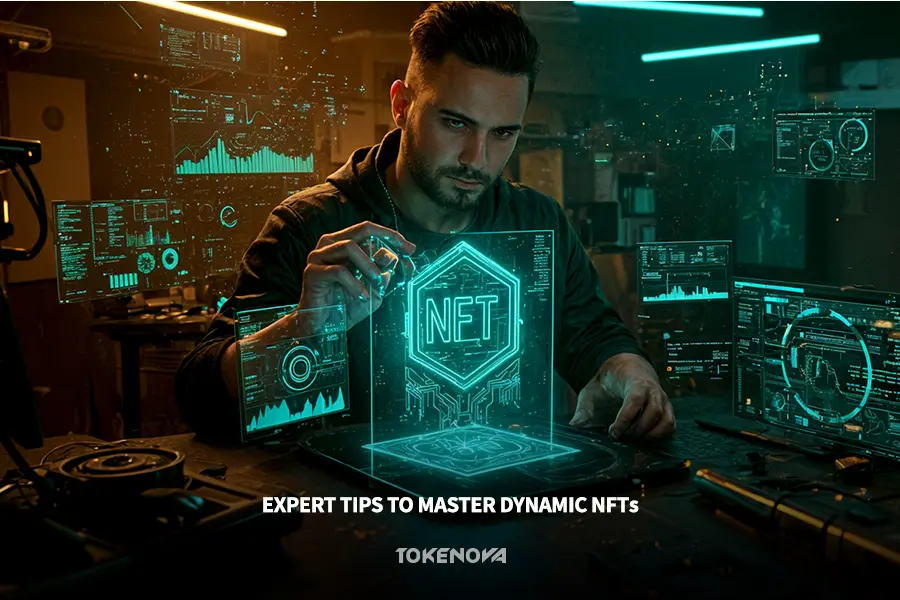
These expert insights provide a robust framework for taking your dynamic NFT (dNFT) projects to the next level. Let’s break down each point and explore how you can integrate them into your creative process:
1. Embrace Storytelling
A compelling narrative can transform a simple digital asset into a memorable experience. When your dNFT tells a story, it creates emotional connections with users, making the asset both engaging and valuable.
Storytelling Frameworks: Consider using proven structures like the hero’s journey or the three-act structure. These frameworks help ensure that your narrative has a clear beginning, middle, and end.
Narrative Examples: Develop dNFTs that follow the evolution of a character or scenario. For instance, a dNFT could chronicle the adventures of a character whose traits and abilities evolve based on user interactions.
2. Prioritize User Experience (UX)
Even the most innovative dNFT can fall short if users find it difficult to interact with or understand. A smooth, intuitive experience encourages wider adoption and deeper engagement.
How to Implement It:
UX Design Principles: Keep your interface simple, clear, and consistent. Avoid clutter and ensure that users can easily navigate and interact with your dNFT.
User Testing: Regularly test your dNFT with real users. Feedback from user testing can highlight pain points and guide you in refining the design for better usability.
3. Community Engagement
A strong, engaged community not only helps spread the word about your dNFT but also offers invaluable feedback that can drive iterative improvements.
How to Implement It:
Community Building Strategies: Use social media, forums, and dedicated channels (like Discord or Telegram) to build and nurture your community. Regular updates and interactive events can keep the community involved.
Feedback Mechanisms: Implement surveys, direct feedback options, or community votes to understand what your users like and what could be improved. This loop of feedback ensures your project evolves in tune with your audience’s needs.
4. Strategic Rarity
Rarity increases desirability. When users know that only a select few have access to certain traits or evolution levels, the perceived value of the dNFT rises.
How to Implement It:
Rarity Tiers: Create multiple tiers that offer unique benefits or rewards. This not only adds a layer of excitement but also encourages collectors to engage deeply with the ecosystem.
Dynamic Trait Generation: Use algorithms to ensure that each dNFT has evolving traits, keeping the asset fresh and engaging over time. This dynamic approach can create a sense of discovery and exclusivity.
5. Cross-Platform Compatibility
The more accessible your dNFT is across different platforms and marketplaces, the broader your potential audience. Interoperability can lead to increased exposure and liquidity.
How to Implement It:
Interoperability Standards: Adhere to industry standards to ensure that your dNFT can be seamlessly integrated and used across various platforms.
Platform-Specific Considerations: Be mindful of the specific requirements or limitations of each platform. Tailor your design to meet these needs while maintaining a consistent overall experience.
By integrating these expert insights into your dynamic NFT project, you not only enhance the creative and technical aspects of your work but also create a more engaging and valuable product for your users. Whether it’s through a well-told narrative, a user-first design, active community involvement, carefully crafted rarity, or broad platform compatibility, each element plays a crucial role in elevating your dNFT game.
Tokenova: Your Trusted Advisory Consultant for Dynamic NFTs & Blockchain Innovation
Are you looking to bring your NFT project to life with cutting-edge dynamic NFT (dNFT) technology? Tokenova is your go-to advisory consultant, providing expert guidance on everything from smart contract development to oracle integrations and NFT strategy.
Why Choose Tokenova?
✅ Expert Blockchain Consultation: Navigate the complexities of NFT creation with ease.
✅ Dynamic NFT Development: Build interactive, evolving digital assets that stand out.
✅ Smart Contract Security Audits: Ensure your NFTs are secure and tamper-proof.
✅ Oracle Integration: Connect your dNFTs to real-world data for enhanced functionality.
✅ Market & Strategy Insights: Get tailored advice to maximize the value of your NFT ecosystem.
Conclusion
The world of dynamic NFTs is brimming with potential. By understanding the core components, popular use cases, and step-by-step process, you can unlock the power of change and create digital assets that are truly revolutionary. Whether you’re a seasoned developer or a creative enthusiast, the ability to make dynamic nfts opens up a world of possibilities. Embrace the challenge, experiment with different concepts, and let your imagination run wild.
The future of digital assets is dynamic, and now you have the knowledge to be at the forefront of this exciting evolution. The potential for innovation and creativity in the dNFT space is immense, and now you have the tools and knowledge to participate in this exciting new frontier. This is more than just creating digital collectibles; it’s about crafting interactive experiences that resonate with users on a deeper level.
The future of dNFTs is bright, with the potential to transform various industries and create new forms of digital ownership and engagement. We encourage you to start experimenting with dNFTs and explore the endless possibilities they offer. Start creating your own dynamic NFTs today!
Key Takeaways
- Dynamic NFTs (dNFTs) are digital assets that can change over time based on external data or conditions.
- Smart contracts, oracles, and token standards like ERC-1155 are core components of dNFTs.
- Popular use cases include gaming, art, collectibles, and loyalty programs.
- Creating dNFTs involves defining the concept, developing smart contracts, integrating oracles, testing, and minting.
- Tools like Crossmint and Irys simplify the process of creating and managing dNFTs.
- Addressing data reliability, security, and metadata caching are crucial for successful dNFT projects.
Can I update the metadata of a dynamic NFT after it has been minted?
Yes, you can update the metadata of a dynamic NFT after it has been minted. This is one of the key features that distinguishes dynamic NFTs from static NFTs. The smart contract associated with the dNFT contains the logic for updating the metadata based on predefined conditions or external data. However, it’s important to note that some platforms may have caching mechanisms that could delay the display of updated metadata. This capability allows dNFTs to evolve and adapt over time, making them more engaging and valuable. The ability to update metadata post-minting is a crucial aspect of dNFTs, enabling them to react to real-world events and user interactions.
What are the main differences between using a no-code platform and coding a smart contract for dynamic NFTs?
Using a no-code platform like Crossmint offers a user-friendly interface that simplifies the process of creating smart contracts and minting NFTs without requiring any coding knowledge. This is ideal for beginners or those who want to quickly prototype their ideas. On the other hand, coding a smart contract using languages like Solidity provides more flexibility and control over the functionality of the dNFT. This approach is better suited for complex projects that require custom logic and advanced features. The choice between these two approaches depends on your technical expertise and the specific requirements of your project. No-code platforms democratize access to dNFT creation, while coding provides more customization and control.
How can I ensure the security of my dynamic NFT project when using oracles?
Ensuring the security of your dynamic NFT project when using oracles is crucial. You should choose reputable oracle providers that have a proven track record of reliability and security. Additionally, implement security measures such as data validation and error handling in your smart contract to protect against malicious attacks or data manipulation. Regularly audit your smart contract and oracle integration to identify and address any potential vulnerabilities. Security is paramount for dNFT projects, as any vulnerabilities could lead to loss of value or functionality. A proactive approach to security is essential for the long-term success of your dNFT project.
What are some common issues I might encounter when creating dynamic NFTs, and how can I troubleshoot them?
Some common issues include metadata caching problems, oracle data inconsistencies, and smart contract vulnerabilities. To troubleshoot these issues, ensure your metadata refresh strategies are robust, validate oracle data thoroughly, and conduct regular security audits of your smart contracts. Additionally, test your dNFTs on a testnet before deploying them to the mainnet to identify and fix any potential issues.
How do gas fees impact the creation and management of dynamic NFTs?
Gas fees are transaction fees paid to the network for executing smart contract code. The complexity of the smart contract and the current network congestion can influence gas fees. High gas fees can make it expensive to create and manage dNFTs, especially if your dNFT requires frequent updates. Consider using a blockchain platform with lower transaction fees or optimizing your smart contract code to reduce gas consumption.
What are some best practices for designing dynamic NFTs that are both engaging and valuable?
To design engaging and valuable dNFTs, focus on creating a compelling narrative, prioritizing user experience, building a strong community, implementing strategic rarity mechanisms, and ensuring cross-platform compatibility. Additionally, consider how the dynamic nature of your dNFT can contribute to its value and engagement.




